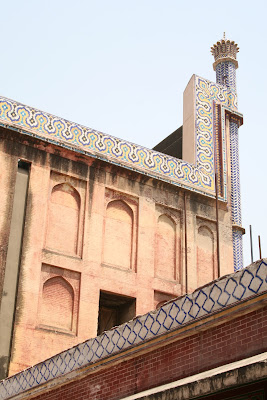The Okara line of shampoos, conditioners and treatments from the French company Rene Furterer. On their website, the company claims that their products are "proven to protect and enhance color-treated hair" thanks in part to "okara extract, a protein from the soybean, [that] repairs and rebuilds damaged hair."
Okara is also a recipe cooked in Japan, very famous in Japan America and some parts of Europe
So what exactly is okara?
Okara is a Japanese word for the by-product of the soymilk and tofu making process; it is the fibrous material that remains after cooked soybeans are pressed through screens to separate the liquid from the solids (in Korean is biji). Since it is mostly considered a by-product, it is rarely seen or spoken of — I have been eating tofu and drinking soymilk for decades, yet I rarely see it mentioned, and the first time I saw okara "in the flesh" was on a tour of Hodo Soy Beanery in Oakland just a few months ago (I wrote a summary of my visit for the Ethicurean).


















































 Principal Rai Nemat Ali Kharal retired honorably on February 2007 after serving and contri Present Principal Professor Muhammad Hussain wattoo who is not only a great teacher of chemistry yet one of the best administrator. He remained principal at Haveli Lakha also where everyone always remember and praise his greatest of contributions there. Here he has not only decorated the college never before yet paid special heed to discipline of college in every respect and in essence. He is leading the Alma mater along with other faculty members having true team spirit. buting to a great deal in the overall development of this institute.
Principal Rai Nemat Ali Kharal retired honorably on February 2007 after serving and contri Present Principal Professor Muhammad Hussain wattoo who is not only a great teacher of chemistry yet one of the best administrator. He remained principal at Haveli Lakha also where everyone always remember and praise his greatest of contributions there. Here he has not only decorated the college never before yet paid special heed to discipline of college in every respect and in essence. He is leading the Alma mater along with other faculty members having true team spirit. buting to a great deal in the overall development of this institute.